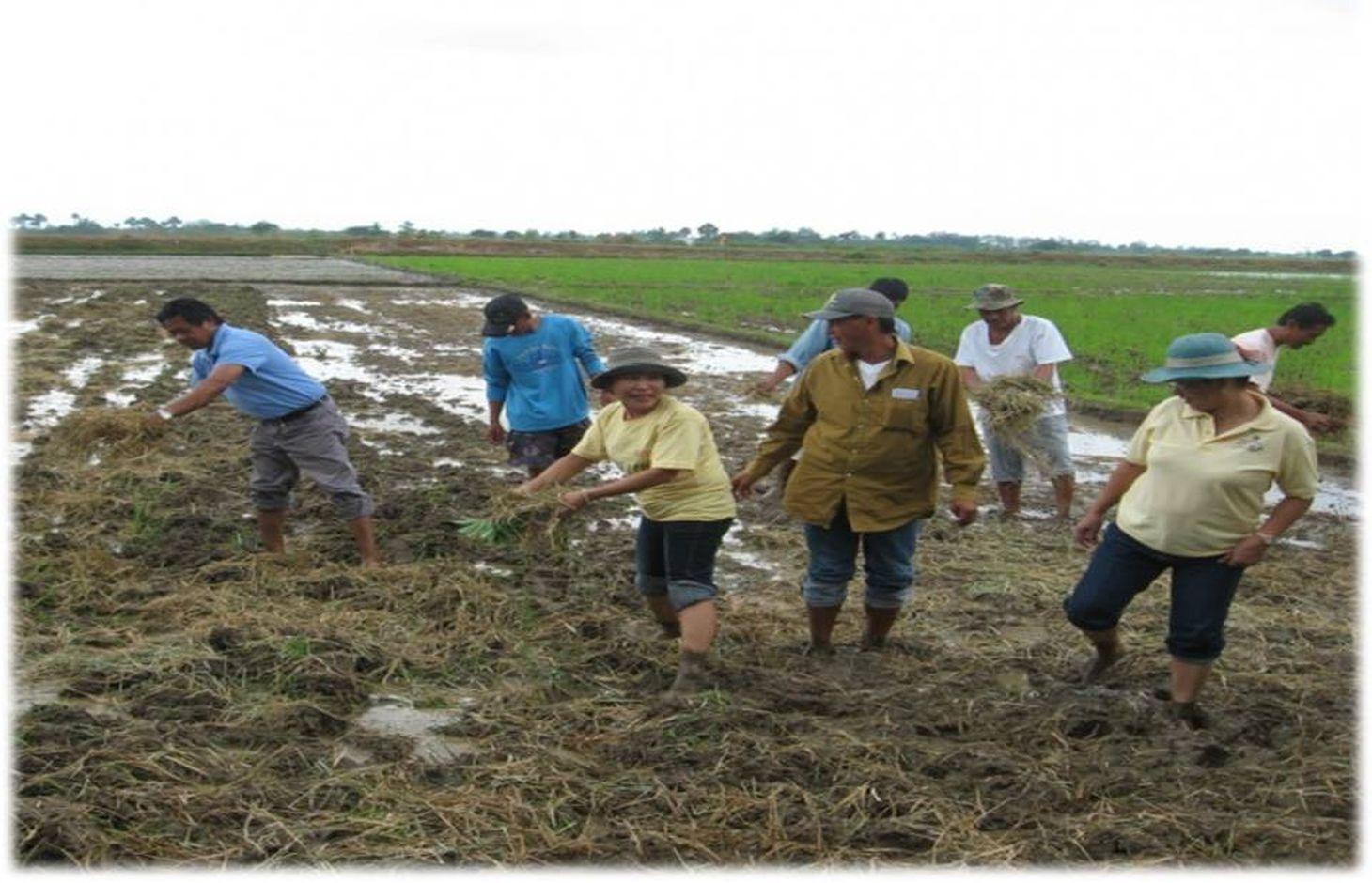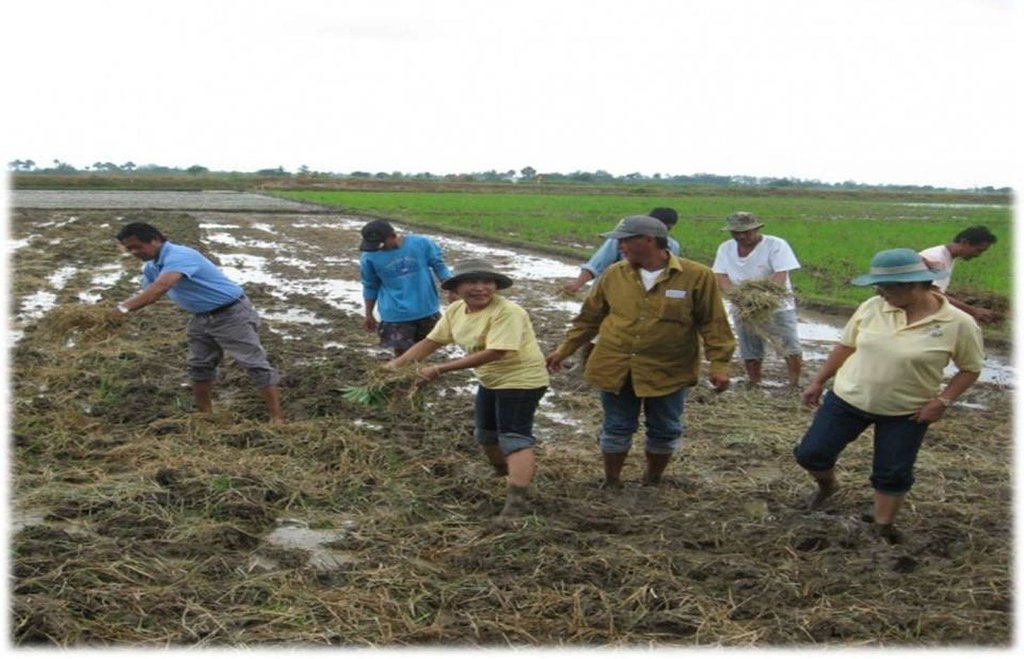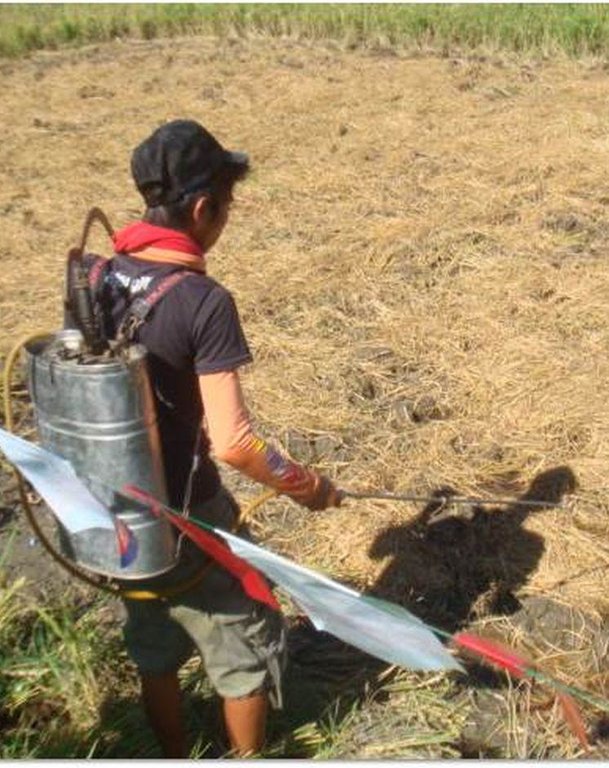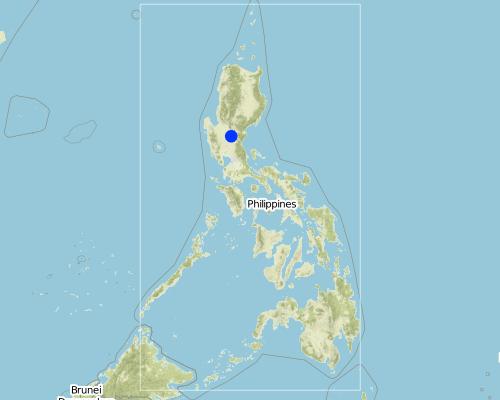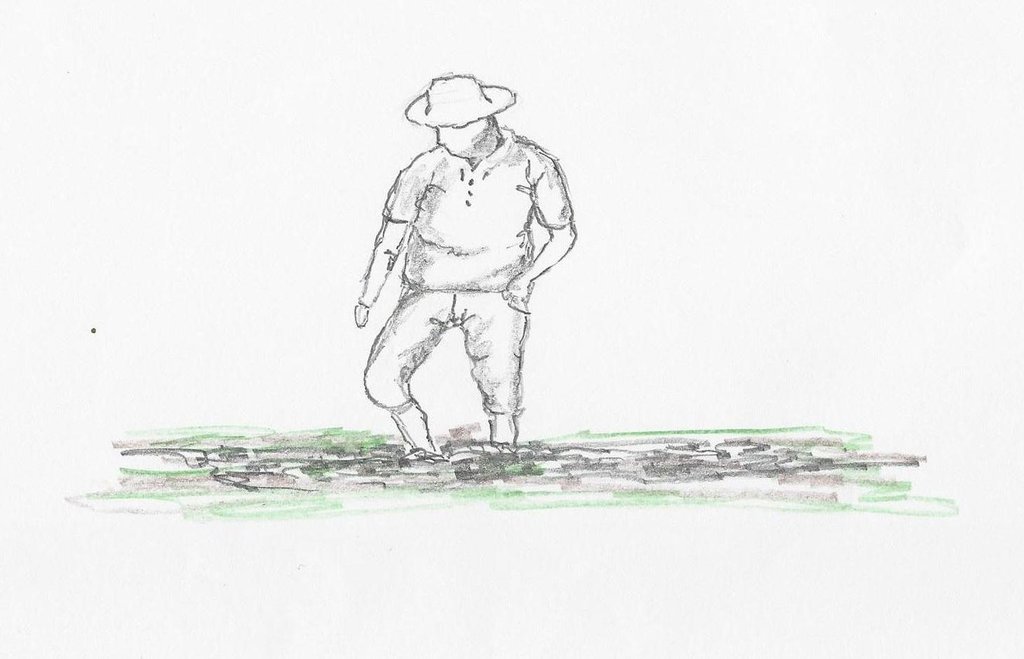Modified Rapid Composting [Philippines]
- Creation:
- Update:
- Compiler: Philippine Overview of Conservation Approaches and Technologies
- Editor: –
- Reviewer: David Streiff
technologies_1295 - Philippines
View sections
Expand all Collapse all1. General information
1.2 Contact details of resource persons and institutions involved in the assessment and documentation of the Technology
Key resource person(s)
SLM specialist:
Dinamling Djolly Ma
DA-BSWM
Philippines
Raquid Jemar G.
DA-BSWM
Philippines
SLM specialist:
Martinez Mamerto F.
DA-BSWM
SLM specialist:
Clariza Flora V.
Philippines
Name of the institution(s) which facilitated the documentation/ evaluation of the Technology (if relevant)
Bureau of Soils and Water Management (Bureau of Soils and Water Management) - PhilippinesName of the institution(s) which facilitated the documentation/ evaluation of the Technology (if relevant)
Local Government Unit of Talavera, Nueva Ecija (LGUT) - Philippines1.3 Conditions regarding the use of data documented through WOCAT
When were the data compiled (in the field)?
22/07/2015
The compiler and key resource person(s) accept the conditions regarding the use of data documented through WOCAT:
Yes
2. Description of the SLM Technology
2.1 Short description of the Technology
Definition of the Technology:
Modified Rapid Composting is the in situ decomposition of rice straw using compost fungus activator, Trichoderma harzianum or Effective Microorganism, that helps in utilizing the residual Nitrogen-Phosphorus-Potassium (NPK) from the decomposed rice straw.
2.2 Detailed description of the Technology
Description:
In search of reducing the vulnerability of the small farmers to the uncontrolled price of chemical fertilizer as well as the dependency on the usage of it, the Department of Agriculture through Bureau of Soils and Water Management (BSWM) developed a fertilizer cost reduction strategy by introducing a new composting technology that will produce organic compost as substitute and eventually decrease the utilization of chemical fertilizer. This is called Modified Rapid Composting.
It incorporates a farm residue management wherein the rice straw is scattered evenly in the field as compost material with the aid of fungus activator that hastens the decomposition process as compared to the traditional composting method. The compost fungus activators used are Trichoderma harzianum and/or Effective Microorganism. Eventually, this compost is mixed into the soil during land preparation. When decayed, it increases the supply of nutrients and improves soil structure.
Purpose of the Technology: This technology aimed to establish a cost-efficient, competitive and sustainable agricultural production system. It addresses the concern of soil fertility deterioration through organic based fertilization scheme. Further, it reduces vulnerability of small farmers to the uncontrolled prices of chemical fertilizers. It also prevent the unfavorable farmer’s practice of burning the rice straw. This also serves as a promotional tool for the gradual conversion of rice land from conventional to organic-based farming system.
Establishment / maintenance activities and inputs: Primarily, this technology is applied and incorporated as part of the land preparation activity. Shallow plowing/rotavating is done to flatten down rice stubbles. The rice straw is then scattered in the field. Irrigation is applied at about 2-3cm depth. Soak the rice straw in the field approximately for 12 hours. Drain excess water. Spray Trichoderma harzianum solution prepared by dissolving 3 packs/knapsack sprayer (20 packs/hectare) in early morning or late in the afternoon. Effective Microorganism solution can also be used aside from Trichoderma harzianum. Broadcast at least 12 kg urea to hasten decomposition. Maintain sufficient moisture in the rice paddies during the decomposition period (15-20 days). Proceed with the usual land preparation. Apply 10 bags of vermicast/chicken dung at last harrowing as basal application.
Natural / human environment: It is introduced and currently practiced in the irrigated plain rice production areas in the Philippines such as in Talavera, Nueva Ecija. The soil type in Talavera is clay loam. Mostly, farmer associations, with an average farm size of 1.50 ha, comprising of small-scale to medium-scale land users are engaged to apply this technology in their rice areas during wet (May to October) and dry (December to April) season. The average rainfall ranged from 1500-2000 mm.
2.3 Photos of the Technology
2.5 Country/ region/ locations where the Technology has been applied and which are covered by this assessment
Country:
Philippines
Region/ State/ Province:
Talavera, Nueva Ecija
Comments:
The practice of MRC is mostly practiced in the irrigated ricefields in Nueva Ecija.
Map
×2.6 Date of implementation
If precise year is not known, indicate approximate date:
- 10-50 years ago
2.7 Introduction of the Technology
Specify how the Technology was introduced:
- through projects/ external interventions
3. Classification of the SLM Technology
3.2 Current land use type(s) where the Technology is applied

Cropland
- Annual cropping
Main crops (cash and food crops):
Main cash crop: rice
Major food crop: rice
Comments:
Major land use problems (compiler’s opinion): soil fertility deterioration
Major land use problems (land users’ perception): soil fertility deterioration
3.3 Further information about land use
Water supply for the land on which the Technology is applied:
- full irrigation
Comments:
Also Water supply: mixed rainfed - irrigated
Number of growing seasons per year:
- 2
3.4 SLM group to which the Technology belongs
- integrated soil fertility management
3.5 Spread of the Technology
Specify the spread of the Technology:
- evenly spread over an area
If the Technology is evenly spread over an area, indicate approximate area covered:
- 0.1-1 km2
3.6 SLM measures comprising the Technology

agronomic measures
- A2: Organic matter/ soil fertility
Comments:
Main measures: agronomic measures
Type of agronomic measures: manure / compost / residues
3.7 Main types of land degradation addressed by the Technology

chemical soil deterioration
- Cn: fertility decline and reduced organic matter content (not caused by erosion)
- Ca: acidification
Comments:
Main type of degradation addressed: Cn: fertility decline and reduced organic matter content
Secondary types of degradation addressed: Ca: acidification
Main causes of degradation: soil management (heavy application of chemical fertlizers), poverty / wealth (increase farm income)
3.8 Prevention, reduction, or restoration of land degradation
Specify the goal of the Technology with regard to land degradation:
- reduce land degradation
Comments:
Main goals: mitigation / reduction of land degradation
4. Technical specifications, implementation activities, inputs, and costs
4.1 Technical drawing of the Technology
4.2 Technical specifications/ explanations of technical drawing
Spreading of rice straw in the rice field.
Location: Talavera, Nueva Ecija
Date: July 23, 2016
Technical knowledge required for field staff / advisors: moderate
Technical knowledge required for land users: moderate
Main technical functions: increase in nutrient availability (supply, recycling,…)
Secondary technical functions: increase in organic matter
Manure / compost / residues
Material/ species: rice straw
Remarks: scattered in the field
4.3 General information regarding the calculation of inputs and costs
Specify currency used for cost calculations:
- US Dollars
Indicate average wage cost of hired labour per day:
2.22
4.6 Maintenance/ recurrent activities
| Activity | Type of measure | Timing/ frequency | |
|---|---|---|---|
| 1. | scattering of rice straw | Agronomic | before land preparation |
| 2. | spraying of Effective Microorganism solution | Agronomic | after scattering of rice straw |
4.7 Costs and inputs needed for maintenance/ recurrent activities (per year)
| Specify input | Unit | Quantity | Costs per Unit | Total costs per input | % of costs borne by land users | |
|---|---|---|---|---|---|---|
| Labour | Scattering of rice Straw | Person/day | 10.0 | 2.22 | 22.2 | 100.0 |
| Labour | spraying of Effective Microorganism solution | Person/day | 2.0 | 2.22 | 4.44 | 100.0 |
| Fertilizers and biocides | Effective Microorganism solution | Liters | 6.0 | 2.222 | 13.33 | |
| Total costs for maintenance of the Technology | 39.97 | |||||
5. Natural and human environment
5.1 Climate
Annual rainfall
- < 250 mm
- 251-500 mm
- 501-750 mm
- 751-1,000 mm
- 1,001-1,500 mm
- 1,501-2,000 mm
- 2,001-3,000 mm
- 3,001-4,000 mm
- > 4,000 mm
Agro-climatic zone
- humid
Thermal climate class: tropics
5.2 Topography
Slopes on average:
- flat (0-2%)
- gentle (3-5%)
- moderate (6-10%)
- rolling (11-15%)
- hilly (16-30%)
- steep (31-60%)
- very steep (>60%)
Landforms:
- plateau/plains
- ridges
- mountain slopes
- hill slopes
- footslopes
- valley floors
Altitudinal zone:
- 0-100 m a.s.l.
- 101-500 m a.s.l.
- 501-1,000 m a.s.l.
- 1,001-1,500 m a.s.l.
- 1,501-2,000 m a.s.l.
- 2,001-2,500 m a.s.l.
- 2,501-3,000 m a.s.l.
- 3,001-4,000 m a.s.l.
- > 4,000 m a.s.l.
Indicate if the Technology is specifically applied in:
- not relevant
5.3 Soils
Soil depth on average:
- very shallow (0-20 cm)
- shallow (21-50 cm)
- moderately deep (51-80 cm)
- deep (81-120 cm)
- very deep (> 120 cm)
Soil texture (topsoil):
- medium (loamy, silty)
Topsoil organic matter:
- medium (1-3%)
5.4 Water availability and quality
Ground water table:
5-50 m
Availability of surface water:
good
Water quality (untreated):
good drinking water
5.5 Biodiversity
Species diversity:
- low
5.6 Characteristics of land users applying the Technology
Market orientation of production system:
- subsistence (self-supply)
- mixed (subsistence/ commercial
Off-farm income:
- 10-50% of all income
Relative level of wealth:
- average
Individuals or groups:
- individual/ household
Level of mechanization:
- animal traction
- mechanized/ motorized
Gender:
- women
- men
Indicate other relevant characteristics of the land users:
Land users applying the Technology are mainly common / average land users
Population density: > 500 persons/km2
Annual population growth: 1% - 2%
5.7 Average area of land owned or leased by land users applying the Technology
- < 0.5 ha
- 0.5-1 ha
- 1-2 ha
- 2-5 ha
- 5-15 ha
- 15-50 ha
- 50-100 ha
- 100-500 ha
- 500-1,000 ha
- 1,000-10,000 ha
- > 10,000 ha
Is this considered small-, medium- or large-scale (referring to local context)?
- small-scale
5.8 Land ownership, land use rights, and water use rights
Land ownership:
- individual, titled
Land use rights:
- open access (unorganized)
5.9 Access to services and infrastructure
health:
- poor
- moderate
- good
education:
- poor
- moderate
- good
technical assistance:
- poor
- moderate
- good
employment (e.g. off-farm):
- poor
- moderate
- good
markets:
- poor
- moderate
- good
energy:
- poor
- moderate
- good
roads and transport:
- poor
- moderate
- good
drinking water and sanitation:
- poor
- moderate
- good
financial services:
- poor
- moderate
- good
6. Impacts and concluding statements
6.1 On-site impacts the Technology has shown
Socio-economic impacts
Production
crop production
Income and costs
expenses on agricultural inputs
farm income
Socio-cultural impacts
food security/ self-sufficiency
community institutions
conflict mitigation
Ecological impacts
Soil
nutrient cycling/ recharge
soil organic matter/ below ground C
Biodiversity: vegetation, animals
pest/ disease control
Climate and disaster risk reduction
emission of carbon and greenhouse gases
6.3 Exposure and sensitivity of the Technology to gradual climate change and climate-related extremes/ disasters (as perceived by land users)
Climate-related extremes (disasters)
Climatological disasters
| How does the Technology cope with it? | |
|---|---|
| drought | not well |
Hydrological disasters
| How does the Technology cope with it? | |
|---|---|
| general (river) flood | not well |
6.4 Cost-benefit analysis
How do the benefits compare with the establishment costs (from land users’ perspective)?
Short-term returns:
positive
Long-term returns:
positive
How do the benefits compare with the maintenance/ recurrent costs (from land users' perspective)?
Short-term returns:
positive
Long-term returns:
positive
6.5 Adoption of the Technology
- more than 50%
If available, quantify (no. of households and/ or area covered):
100 household and the area was around 0.1-1km^2
Of all those who have adopted the Technology, how many have did so spontaneously, i.e. without receiving any material incentives/ payments?
- 10-50%
Comments:
76% of land user families have adopted the Technology with external material support
Comments on acceptance with external material support: Since the technology is introduced as a project of the government, the farmer-beneficiaries obtained external material support
24% of land user families have adopted the Technology without any external material support
There is a moderate trend towards spontaneous adoption of the Technology
6.7 Strengths/ advantages/ opportunities of the Technology
| Strengths/ advantages/ opportunities in the land user’s view |
|---|
|
Environment-friendly since it prevent the farmers from burning the rice straw How can they be sustained / enhanced? Increase advocacy campaign |
| Strengths/ advantages/ opportunities in the compiler’s or other key resource person’s view |
|---|
|
Positive impact/feedback from the farmers on the reduction and elimination on the use of chemical fertilizers. Less inorganic fertilizer usage resulted to decreased in the production costs since inorganic fertilizer are very much expensive. It also enhanced the characteristics of the soil according to the farmer’s observation. How can they be sustained / enhanced? Boost awareness of the farmers on the benefits of organic-based farming |
|
Educate the farmers to become resourceful in terms of utilizing organic materials as fertilizer instead of depending on the commercially available in the market How can they be sustained / enhanced? Intensify or strengthening the campaign of not burning rice straw |
6.8 Weaknesses/ disadvantages/ risks of the Technology and ways of overcoming them
| Weaknesses/ disadvantages/ risks in the compiler’s or other key resource person’s view | How can they be overcome? |
|---|---|
| Additional farm labor particularly in the scattering of rice straw and spraying of compost fungus activator so some farmers still opt to burn the rice straw. | Increase advocacy campaign |
Links and modules
Expand all Collapse allLinks
No links
Modules
No modules


